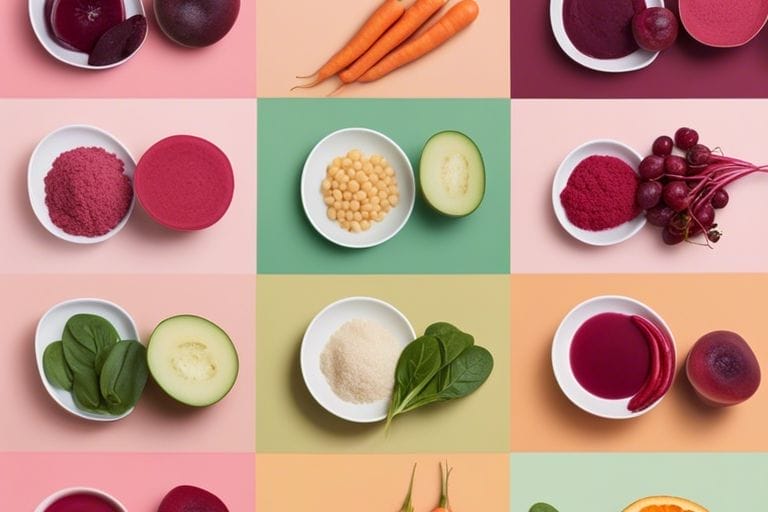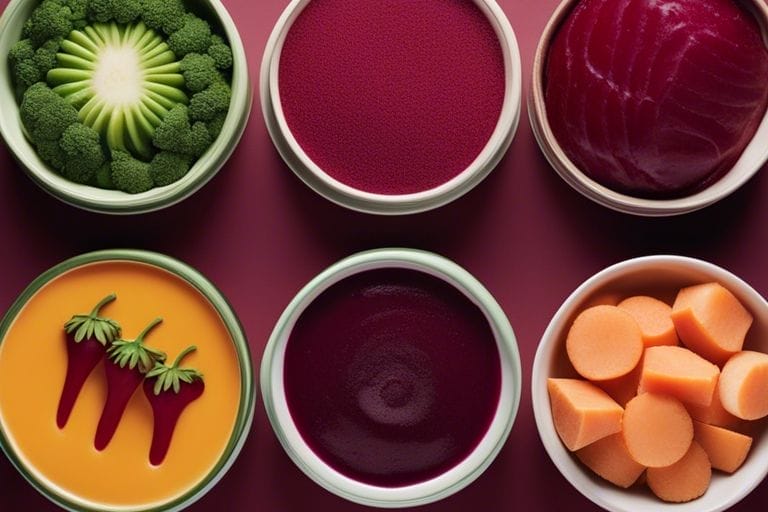As a parent, ensuring the safety and well-being of your baby is your utmost priority. When it comes to the food you feed your little one, it is crucial to be aware of the potential dangers of food coloring. While food coloring may make certain foods look more appealing, it can also pose serious health risks to infants. Some food colorings have been linked to allergic reactions, behavioral issues, and even carcinogenic effects. It is important to thoroughly research and understand the potential risks associated with food coloring before introducing it into your baby’s diet. In this blog post, we will discuss the safety of food coloring for babies and provide you with tips on how to ensure the well-being of your little one.
Key Takeaways:
- Consult with a pediatrician: Before introducing any food coloring to a baby’s diet, it is crucial to consult with a pediatrician to ensure that it is safe for the baby’s age and overall health.
- Avoid artificial food coloring: It is best to avoid artificial food coloring, as they may contain harmful chemicals and additives that can be detrimental to a baby’s health. Opt for natural food coloring options instead.
- Read labels carefully: When purchasing baby food or snacks with food coloring, it is important to read the labels carefully to check for any potential allergens or harmful ingredients that could pose a risk to the baby’s safety.
Understanding Food Colors
One of the key components in many of the foods that we consume is food coloring. Food coloring is added to foods to enhance their visual appeal and make them more appetizing. These additives come in a variety of forms, including liquids, powders, gels, and pastes. They are used in everything from baked goods and candy to beverages and processed foods.
Types of Food Coloring
There are two main types of food coloring: natural and synthetic. Natural food colors are derived from plants, fruits, vegetables, and minerals. They are often perceived as a safer option compared to synthetic food dyes. Synthetic food colors, on the other hand, are manufactured from chemicals in a laboratory. Common examples of synthetic food colors include red dye #40, yellow dye #5, and blue dye #1.
Though some people believe that natural food coloring is safer, both natural and synthetic food colors are subject to regulatory approval before being used in food products.
- Natural food colors: derived from plants, fruits, vegetables, and minerals
- Synthetic food colors: manufactured from chemicals in a laboratory
Though some people believe that natural food coloring is safer, both natural and synthetic food colors are subject to regulatory approval before being used in food products.
Regulations and Standards
When it comes to the safety of food coloring, the regulations and standards set by government agencies and the food industry play a crucial role. These regulations aim to ensure that the food colors used are safe for consumption and do not pose a health risk to consumers. The United States Food and Drug Administration (FDA) has established allowable limits for the use of various food colors, and manufacturers are required to adhere to these limits. In addition to this, the FDA regularly monitors and evaluates the safety of food colors to ensure that they meet the necessary standards for consumption.

Health Concerns and Research Findings
Obviously, as a parent, you want to ensure that the food your baby consumes is safe and free from any potential health risks. When it comes to food coloring, there has been ongoing debate about its safety for infants. To help you make an informed decision, it’s essential to understand the potential risks associated with food colors and the current scientific perspectives on their safety. For more information, you can visit this helpful resource Is food coloring safe for babies? – Baby Food Hub.
Potential Risks Associated with Food Colors
There are some potential risks associated with food colors that you should be aware of when considering their use in your baby’s food. Studies have indicated that certain synthetic food colors may have adverse effects on behavior in some children. Some allergic reactions to food colors have also been reported, although these are rare. It’s important to carefully monitor your baby for any unusual reactions after introducing foods with added coloring.
Current Scientific Perspectives on Food Coloring Safety
Current scientific research on the safety of food coloring for infants suggests that while there are potential risks associated with certain synthetic food colors, others have been deemed safe for consumption. Regulatory agencies, such as the Food and Drug Administration (FDA), have established acceptable daily intake levels for various food colors. It’s crucial to choose food products for your baby that adhere to these safety standards and to use food colors in moderation, if at all.
Guidelines for Parents and Caregivers
Keep in mind that the safety of food coloring for babies is a concern for many parents. It’s essential to be well-informed and take the necessary precautions to ensure your baby’s safety. According to Sound Science: New Studies on Food Coloring Safety, there have been recent studies examining the safety of food coloring, providing valuable insights into its potential impact on infants and young children. Here are some guidelines to help you make informed decisions.
Reading Food Labels and Identifying Food Additives
When it comes to selecting food products for your baby, reading labels is crucial. Look for any artificial food colorings or additives listed in the ingredients. Be cautious of terms like “artificial colors,” “FD&C,” or “D&C,” which indicate synthetic dyes. Opt for products with natural coloring sources, such as beet juice, turmeric, or spinach extract. When in doubt, consult your pediatrician to ensure the safety of the food products you choose for your baby.
Natural Alternatives to Artificial Colors
Choosing natural alternatives to artificial colors can help you avoid potential risks associated with food coloring. Opt for organic baby food or homemade purees to ensure that your baby’s diet is free from synthetic dyes. Fruits and vegetables are excellent sources of natural pigments that can add vibrant colors to your baby’s meals. By incorporating these natural alternatives, you can minimize your baby’s exposure to potentially harmful additives while providing them with nutritious and visually appealing foods.

Is Food Coloring Safe for Babies? Ensuring Infant Safety
With this in mind, it is important to be cautious when introducing food coloring to your baby’s diet. While many food colorings are generally recognized as safe (GRAS) by the FDA, some studies have shown potential negative effects on children’s behavior and development. Additionally, infants are more susceptible to the effects of food coloring due to their smaller body size and developing systems. It is always best to consult with your pediatrician before introducing any new food products, including those containing food coloring, into your baby’s diet. As a parent, it is your responsibility to prioritize your baby’s safety by making informed decisions about the food they consume.
Is Food Coloring Safe for Babies? Ensuring Infant Safety
Q: What are the potential risks of using food coloring in baby food?
A: The potential risks of using food coloring in baby food include allergic reactions, gastrointestinal issues, and possible long-term health effects. Some food colorings have been linked to hyperactivity and behavioral issues in children. It is essential to be cautious when introducing any additives, including food coloring, into a baby’s diet.
Q: How can I determine if a food coloring is safe for my baby?
A: To determine if a food coloring is safe for your baby, research the specific color additive and its potential effects on infants. Look for natural alternatives, such as fruit and vegetable juices, to add color to your baby’s food. Consult with a pediatrician or a qualified healthcare professional to ensure that the food coloring is safe for your baby and to address any concerns about potential allergies or adverse reactions.
Q: Are there any regulations or guidelines for using food coloring in baby products?
A: The Food and Drug Administration (FDA) regulates the use of food colorings in the United States. However, there are no specific regulations regarding the use of food coloring in baby products. It is important for parents to be vigilant and to carefully review the ingredients of baby food and products to identify any potentially harmful additives. When in doubt, opt for natural and organic baby food options that do not contain artificial food colorings.

